Reducing the environmental impact of your lab can save money as well as water and fuel. Phillip Broadwith reports
Chemistry laboratories are resource-intensive places. ‘We use vast amounts of electricity and water,’ says Andrea Sella, a chemist and ‘green champion’ at University College London (UCL) in the UK. ‘But because energy is essentially invisible, most of us have little or no idea even of the order of magnitude of what we’re using.’
Peter James, director of S-Lab – a not-for-profit organisation aiming to raise awareness of sustainability issues and spread best practice guidance for running laboratories in higher education – agrees. ‘Very few labs, certainly in universities, pay their own utility bills. And there’s very little incentive for departments or research groups to make savings.’
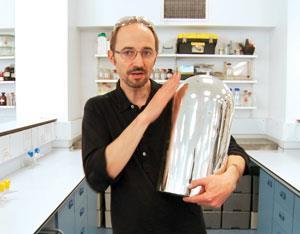
Most of the University of Cambridge’s laboratories are in older buildings, which weren’t designed with energy efficiency in mind, says Jeremy Sanders, the university’s pro-vice-chancellor for institutional affairs and former head of chemistry. ‘It’s also grown and been modified over 50 years, so you end up with a complicated building that nobody really fully understands,’ he adds. ‘Facilities managers have a complex job just trying to keep water flowing through the pipes and nowhere else, and the electricity in the wires and nowhere else. So asking them to do detailed assessments of energy use and what might be changed to improve it is a big extra job.’
But things are changing, thanks to the combined efforts of determined individuals like Sella, and organisations like S-Lab, which runs an awards scheme to highlight particularly successful projects, and is hosting its annual conference in September to bring key stakeholders together to discuss the issues in a more strategic sense. ‘Three to four years ago, most people didn’t imagine that you could do things differently in chemistry labs,’ says James. ‘They thought it was all a given; that the designs of the ventilation systems, which account for the majority of lab energy use, were fixed; the way you operate is the way it’s always been done and that’s the way it will always be done. But people are beginning to wake up to the fact that there are alternatives.’
Going against the flow
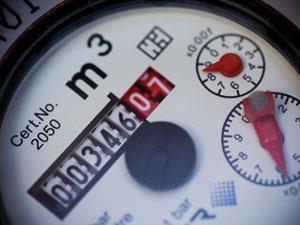
For Sella, the first target was UCL’s water bill. And the crucial first step was to get some data. He had an inkling that the department was using a lot more water than it needed to, ‘but because we didn’t have any data, we had no real idea where we stood’, he says. Acquiring that data sounds simple in principle: you go and read the meters. ‘But actually there are all sorts of things that get in the way.’ Sella points out various political and bureaucratic obstacles, as well as the organic nature of the way buildings grow and change over time. ‘Traditionally, there hasn’t been a lot of metering put in,’ he adds.
But once he started collecting data, he quickly realised the magnitude of the problem. The department was consuming an average of 170m3 of water a day – about the same as the average family of four consumes in a whole year. ‘When you announce to a staff meeting that we’re flushing away enough water to fill the foyer of our building every day and a half, everybody’s jaws hit the floor,’ he says. ‘But with that single number, you still don’t know where the water is going. Everyone argues: it must be those people washing all their glassware, or running their condensers.’ So he convinced the head of chemistry to set up an experiment: ‘We decided that over Christmas we would shut everything down, and as we did that it became immediately obvious which sections of the department were using the water.’
We were flushing away enough water to fill the foyer of our building every day and a half
Andrea Sella
Sella was surprised to learn that the highest users were not the synthetic labs, but the water-cooled diffusion pumps for the high-vacuum experiments in the physical chemistry section. They were being cooled by mains water, with the taps turned on full. Simply throttling back the flow to a reasonable level slashed the department’s daily water consumption to 90m3, and fitting valves and flow meters brought it down further. ‘That simple and cheap intervention, which cost £2000 but took nearly six months to get financial approval, led to easily £20,000 a year in savings, with a further £20,000 a year just from looking at the taps and being a bit more careful how we use water,’ says Sella. By the beginning of 2012, the department was using just 45m3 of water per day.
Extracting better value
But when it comes to energy, by far the dominant factor is air management, particularly for fume cupboards. Heating, ventilation and air conditioning is the biggest component of any laboratory’s energy bill, says Keith Beattie from consultancy firm eeCO2.

‘Generally, labs replace extracted air with 100% fresh air,’ Beattie explains. ‘So you’re bringing in fresh air, often in large volumes. You’re heating or cooling that air, which takes a lot of energy, just to see it extracted out of the roof of the building. In an office building you’d recirculate 90% or more of that air, so you retain the embedded energy, but in a lab you can’t do that, because you don’t want to recirculate potentially hazardous substances in the extracted air.’
But if a lab is using older, constant air volume type fume cupboards, then it’s possible that modifying them could lead to significant energy savings. Beattie explains that these cupboards are designed to draw the same amount of air, regardless of whether the sash is open or closed. More modern cupboards operate on variable air volume systems, so that when the sash is closed, they only draw a small amount of air. This requires slightly more complex control of the extractor system and air supply, but if the cupboards themselves are sound, it’s relatively easy to retrofit.
As an example, eeCO2 has retrofitted variable air volume systems to over 500 fume cupboards at the Wilton Centre near Redcar, UK. This former ICI research site is now an incubator for lab-based startup companies. ‘We removed around 50 secondary extract fans that weren’t needed any more as they were extracting less air,’ says Beattie. For one building with 100 fume cupboards, the energy consumption dropped by 66% after the refit. ‘The payback time for the Wilton Centre was around 18?months. Generally, it’s under two years – that obviously depends on energy prices, but as they go up it’s getting even easier to justify the change,’ Beattie adds.
On the air supply side, Beattie says that it’s important to make sure that heating and cooling systems are working at their peak efficiency, but the biggest savings come from reducing the volume of air moving through the system. In new buildings, it might be possible to fit heat exchangers to recover energy from exhaust gases. ‘But those things are really difficult to retrofit,’ he says, ‘partly because the extract and intake need to be in the same place, which they often aren’t, and the heat exchangers need to be tolerant of any chemicals in the extracted air, which makes them expensive.’
All the small things
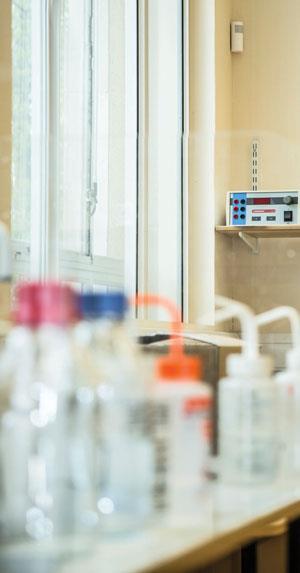
James points out that there is quite a lot that can be done to improve air management without major refurbishments. ‘You can play around with airflow – for example, systems may have drifted away from the design specifications, or those specifications may have been set a bit too high, so you can experiment a bit by putting a bit less air through, or widening the temperature parameters that you’re operating under, which can make a significant difference,’ he says.
‘Continuous commissioning’ programmes, which involve more active monitoring and maintenance, can eliminate inefficiencies like clogged air filters, which make pumps work much harder. ‘You can also look at patterns of use in labs,’ says James. ‘Does everything need to be running 24/7? Have you got fume cupboards being used for storage, which would be better off being replaced with vented cabinets?’
When the labs in Cambridge’s chemistry department were refurbished in the 1990s, the fume cupboards were all converted to variable air volume, says Sanders. ‘We are now about to invest around £400,000 in a control system that varies how hard the fans pull depending on the wind speed and direction,’ he says. When a similar system was installed at the University of Southampton, UK, it dropped their extraction energy bill significantly. Sanders estimates that in Cambridge, the system will pay for itself in four to five years, then contribute a £70,000–100,000 a year saving in electricity.
Sanders’ other recent focus has been on electricity costs. ‘Where possible, we’re replacing lighting with LEDs and motion sensors, so when there’s nobody moving around, the lights go out. We also had a lot of old computer servers in sub-optimal rooms that were conventionally air-conditioned,’ he says. ‘That’s a waste of space and electricity, because you end up using as much energy to cool the room as you do to run the computers.’ The university is now building a dedicated data centre, which will house high-power servers in a much more energy efficient way, as well as freeing up lab and office space for doing chemistry.

This leads to a different kind of problem: ‘My academic colleagues are sometimes very reluctant to let their familiar old servers go, even though they get much better value from new ones,’ Sanders says. Changing people’s behaviour and attitudes is much harder than technological fixes. Sanders cites an example of replacing some –80°C freezers with newer, more efficient models. ‘In persuading people to move old samples, you often find you don’t need to keep samples from a decade ago that are not very well labelled and will never be needed again, so you might also get away with fewer freezers. We might also ask people to share a freezer with another research group; or share a drying oven or other equipment.’
This is where Sella thinks an incentive system would help. He argues that a proportion of any savings should be returned as credit to be spent at the head of department’s discretion. ‘That could be funding a studentship, or buying some new equipment, or inviting a visiting lecturer,’ he suggests. Cambridge is considering the role financial incentives might play, says Sanders. ‘But there are lots of questions, not least who gets it. Should it be at department level? Or the research group leader? And what kind of incentive can you give your buildings managers? It’s an open question right now as to what’s appropriate.’
Taking the long view
One reason why chemistry laboratory energy consumption is higher than it needs to be, James explains, is that in the past, there wasn’t much information about how labs were going to be used in practice. ‘So people had to assume the worst, and plan for very high air extract volumes. A lot of the current activity around energy is about getting a better understanding of how labs are going to be used, and developing much more flexible systems that can respond to changes in use over the lifetime of the installation.’
If we can be innovative in our science, let’s be innovative in the way we manage our resources
Andrea Sella
Sella agrees: ‘Space is sometimes perceived as power, and it’s often divided up and allocated based on short-term decisions in response to grant income, rather than taking the opportunity to look at the longer term, at where we expect to be six or seven years down the line.’
The other thing we’re not very good at doing yet, Sanders says, is thinking about lifetime costs and energy implications. ‘You might get a grant or a donation or have budget for a capital expenditure and it’s sometimes very difficult to say “if I spent an extra 2% on the capital, I’m going to save on recurrent costs” – particularly when they come from different budgets,’ he says.
For Sella, it’s clear that there are serious economic drivers for improving sustainability. ‘We can’t afford, as universities, not to be innovative in all kinds of areas. If we can be innovative in our science, let’s be innovative in the way we manage our resources and budgets. We need to find creative ways to do things better, because that will free up time and resources to do more of the interesting and fun stuff.’
Reduce, reuse, recycle
Sustainable laboratory practice isn’t necessarily always about reducing energy consumption. Despite being power-hungry, liquid helium recovery systems are becoming more financially viable. ‘The price of liquid helium for local universities was $6 (£3.60) per liquid litre about 18 months ago, and it’s currently $16,’ says Tabitha Sebastino from cryorefrigeration equipment manufacturer Cryomech. ‘But there are also supply problems: orders not turning up, or falling short of the ordered amounts.’

In response to helium shortages, Cryomech started making liquefiers, so that people could use helium from pressurised cylinders (which is easier to get hold of). ‘But it quickly became clear that our customers wanted to be able to recover and recycle more helium,’ Sebastino says. ‘People have been recovering helium all over the world for years, but mostly on a much larger scale. Not only would you need to make a $1 million capital investment, but you’d also need to employ someone to run and maintain the system,’ she explains. That might be economical on a campus where lots of helium-using apparatus is clustered close together, but for most chemistry departments it’s not worth it.
Cryomech is targeting smaller scale applications. A typical NMR spectrometer might boil off between three and five litres of liquid helium per day, so once there are a few spectrometers collected together, or close enough to other helium-cooled equipment, the company’s systems that can recover 15–60 liquid litres per day become viable.
The systems comprise a large atmospheric pressure storage balloon, coupled to a compressor to store the recovered helium in cylinders until there is sufficient to run the liquefier. This recovered helium is then purified by passing it through a liquid nitrogen-cooled trap with an adsorbent charcoal filter to get rid of any air or other contaminants that may have been introduced into the gas. The purified gas can then be liquefied using a pulsed-tube liquefier. Running properly, it should be possible to recover over 90% of the helium used.
The company has already installed systems in several larger North American university chemistry labs. They cost in the region of $150,000 to $500,000, depending on capacity and complexity, ‘The payback period is something like one to two years, depending on your helium price,’ says Sebastino, ‘but the biggest advantage is taking control of your helium supply.’
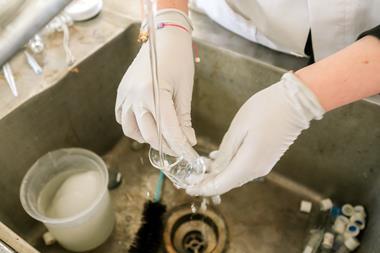

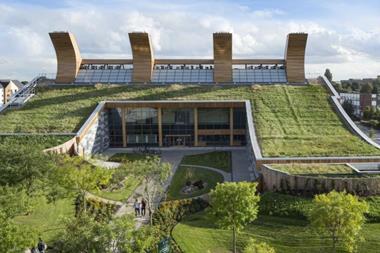
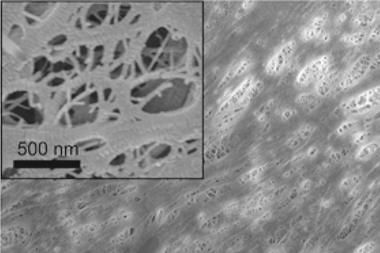








No comments yet